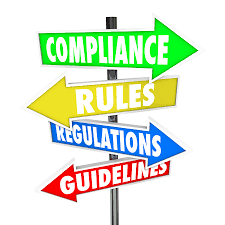
Margin debt in February grew to $814 billion, up dramatically from a year ago. What this portends for arbitration remains to be seen.
Several media outlets reported recently that investor margin debt as recorded by FINRA had grown to record highs. For example, the Wall Street Journal on April 7 reported in an article titled Investors Big and Small are Driving Stock Gains with Borrowed Money: “As of late February, investors had borrowed a record $814 billion against their portfolios, according to data from the Financial Industry Regulatory Authority, Wall Street’s self-regulatory arm. That was up 49% from one year earlier, the fastest annual increase since 2007, during the frothy period before the 2008 financial crisis. Before that, the last time investor borrowings had grown so rapidly was during the dot-com bubble in 1999.” In March 2020, the Alert’s publisher and Editor-in-Chief George Friedman and Securities Arbitration Commentator founder and President Richard P. Ryder co-authored a blog post, What’s Past is Prologue – All Over Again. What’s Ahead for Arbitration Filings in the Wake of Recent Volatility, that among other things discussed margin debt. With permission of the authors, we rely heavily on that writeup to update the numbers.
Margin History
Arbitration claims generally rely upon realized losses. If investors hold through a downturn and the market quickly recovers, potential losses evaporate. Margin trading increases the chances of realized losses in market declines because that’s when margin calls test investors’ resolve (and financial wherewithal). In a 2015 blog post, we quoted FINRA reports tagging total debit balances in customer accounts at $485.9 billion* at the end of January 2015. FINRA posts margin statistics on its Website (ed: this is a great resource, and it lags less than in the past). Margin debt, we know from past reports, had surpassed the half-trillion mark before (four months in 2014), but, by January 2015, debit balances in customers’ securities margin accounts had subsided to $485.9 billion. That number hit a high of $668.9 billion in May 2018, during a time when the Dow Jones rose from about 18,000 to 24,000. A four-month, 9% downdraft from September to December 2018 shaved $100 billion off that high. During 2019, the Dow climbed fairly steadily — almost 5,000 points — closing above 28,000 at the end of the year, but margin debt rose only about 5% year-over-year to $579 billion. However, 2020 and early 2021 present an entirely different trend. With the Dow sitting at around 31,000 at the end of February, margin debt had grown from $562 billion as 2020 dawned to $814 billion at the end of February 2021. What might the staggering growth in margin mean in terms of future arbitration filings? The short answer is: “Not much as long as the capital markets keep going up, but if there are major, sustained declines, watch out below!”
Margin and Investor Claims
When the capital markets drop precipitously and then quickly rebound, margin customers may be sold out near the bottom, only to see the stock’s price come all the way back a short time later. The usual arbitration claim is: “You [terrible, awful, evil, bad person]! You gave me a margin call when I was taking a lunch break, and sold me out 10 minutes later.” This is exemplified in the extreme by the 36-minute long “Flash Crash” of May 6, 2010 … or that of 2015. The firms will point out that they really didn’t have to give any notice and their actions were consistent with the account agreement and FINRA rules (“We gave you 10 minutes when we really could have given no notice”). Firms will also point out that, had they waited any longer, the losses would have been worse, possibly resulting in a margin deficit. Arbitrators often look to past practice.
Margin and Brokerage Firm Claims
When the markets suffer significant drops and don’t recover, customers may end up with margin deficits. In other words, even taking into account the stocks sold off, the investor still has a negative margin balance, with the firms saying: “So, after deducting the stocks we sold off to address your margin deficiency, you still have a debit balance of $50,000.” Customers don’t react well to this: “You [terrible, awful, evil, bad person]! You gave me a margin call when I was in the bathroom, and sold me out 10 minutes later. Go [engage in a physically impossible act]!”
Summing Up
Clearly, the growing margin numbers bear close watching. Interestingly, we haven’t seen that much from the SEC or FINRA warning BDs to check their margin policies, etc. — not like back in the earlier 2000s, when the regulators and consequently the BDs were on top of the market break in terms of margin control. However, the Commodity Futures Trading Commission did issue a Press Release on April 6, New CFTC Customer Advisory Cautions the Public to Beware of Trading Based on Internet Hype, warning about the risks of speculating in a frothy market.
(ed: *An earlier iteration of this blog post referred here and at elsewhere to “million” with an “m” when we of course meant “billion.” These have been corrected in the blog post. We regret the error. **We’ll be keeping an eye on the “Margin Calls” Controversy Type on FINRA’s monthly report. Through February, there were 20 such cases, up from 7 in 2020. ***Our thanks to March 2020 blog post co-author Rick Ryder for allowing us to borrow heavily from that post.)

This post first appeared on the Securities Arbitration Alert blog. The blog’s editor-in-chief is George H. Friedman, Chairman of the Board of Directors for Arbitartion Resolution Services, Inc.






